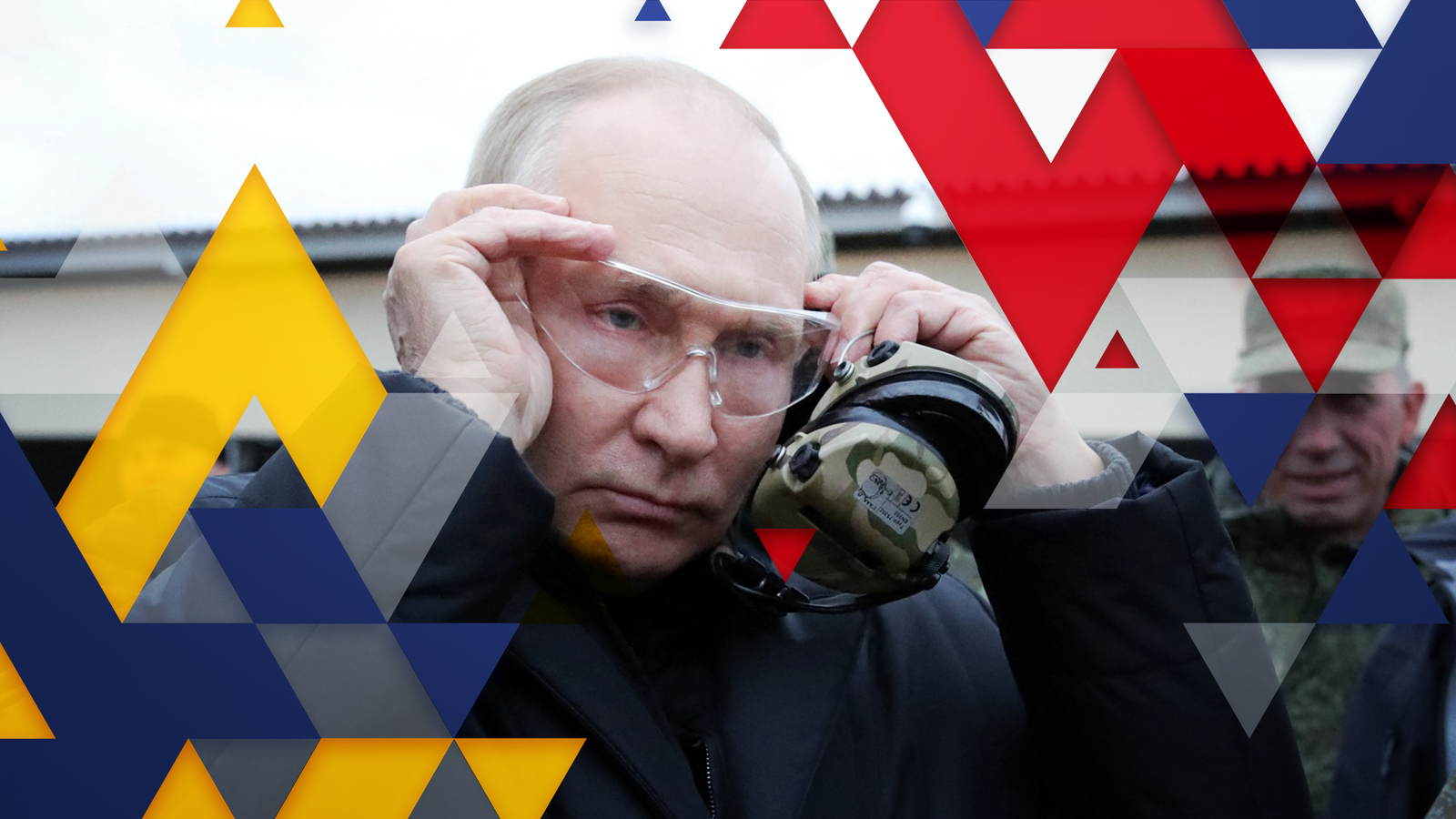Ukraine war: For all its political bluster, the invasion has shattered Russia’s illusion of invincibility

Ukraine is warning that a major Russian offensive is imminent – and that the next few months will be crucial in deciding the course of the war.
Whether this caution is justified or not, it’s clear that the invasion has not gone according to plan and Moscow’s archaic military tactics have been exposed.
Despite initially gaining traction, the Russian forces were pushed back and their efforts to secure full control of the entire Donbas area in eastern Ukraine stalled.
The Russians had not anticipated the courage and determination of Ukraine‘s resistance, or the enduring level of Western military support provided.
Ukraine war – follow the latest developments
Please use Chrome browser for a more accessible video player
3:11
Battle of Bakhmut nears tipping point
The Russian army has been badly mauled, and their air force has been conspicuous by its absence.
Despite Russia‘s impressive array of military capability – regularly displayed during massive parades – it has been unable to translate this equipment into battle-winning capability. A combination of systemic corruption, autocratic leadership and a reliance on 20th-century military tactics had created the illusion of Russian invincibility; this illusion has been shattered.
What next? Russia can generate more soldiers through mobilisation, but quantity does not equal quality. Although lessons will have been learned, the Russian forces have the same weapons, and thousands of inexperienced recruits, so how will they hope to turn the tide?
Please use Chrome browser for a more accessible video player
3:51
Who is winning the war in Ukraine?
Modern battlefield success relies on teamwork – an all-arms approach. Russia needs its tanks, artillery, infantry, intelligence and air force operating coherently (21st-century warfare) where the Russian advantage of scale could prove decisive.
Advertisement
The alternative – throwing increasing numbers of inexperienced recruits as cannon fodder in the vain hope that mass will prevail (20th-century warfare) – will render them increasingly vulnerable to Ukrainian high-tech precision weapons; albeit Putin appears more concerned with securing his place in Russian history than the fate of his conscripts.
Please use Chrome browser for a more accessible video player
16:14
US warns of Russian spring offensive
Although warships, tanks and fast-jets provide a very tangible and credible visual deterrent, the decisive measure of warfighting capability is how these military assets are employed, which requires intensive training – individually and collectively.
It is difficult, costly and time-consuming, but teamwork is vital to leverage the skills, experience, capabilities and intelligence of all available assets to create decisive capability. Western militaries train relentlessly in the joint environment – Russia clearly does not.
Click to subscribe to Ukraine War Diaries wherever you get your podcasts
Although the Russian invasion of Ukraine has had – and will continue to have – dreadful consequences, it has served to highlight a huge disparity between Russia’s political bluster and its actual warfighting capability.
A year ago Russia would have considered itself militarily a near-peer to the US; how events have conspired to expose the harsh truth behind the rhetoric.